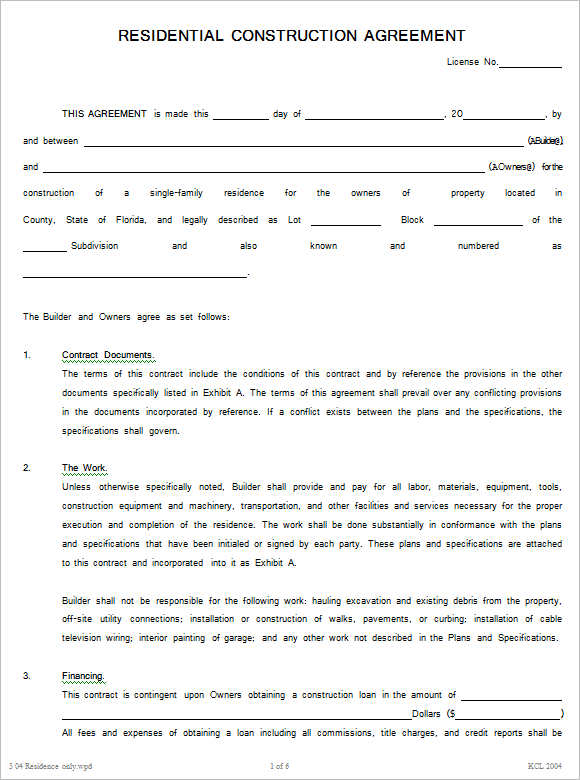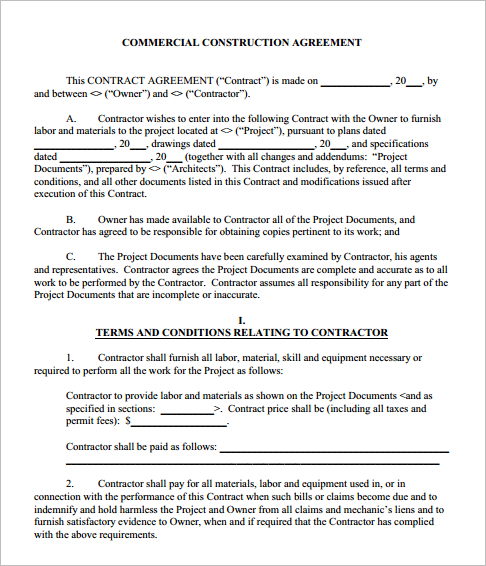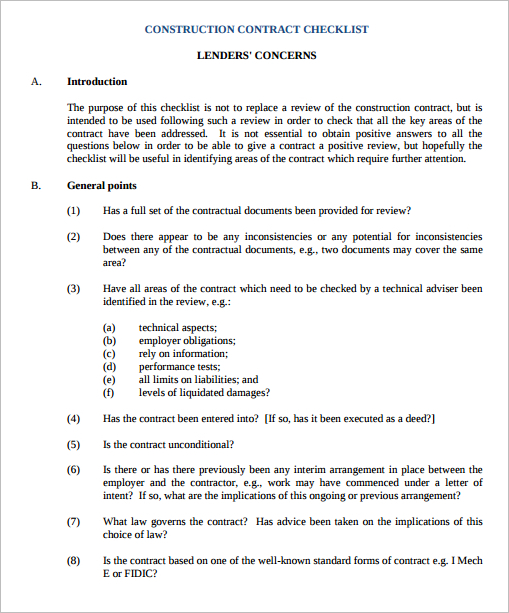In the bustling world of construction projects, clarity and precision are paramount. The foundation of any successful construction endeavor lies in a robust and well-defined agreement. Enter the construction agreement template – a versatile tool that lays the groundwork for seamless collaboration between parties involved in a construction project. In this article, we delve into the intricacies of construction agreement templates, exploring their significance and offering insights into their utilization.
Defining the Framework: Understanding Construction Agreement Templates
A construction agreement template serves as a standardized framework that outlines the terms and conditions governing a construction project. These templates encapsulate various aspects of the project, including project scope, timelines, costs, responsibilities, and dispute resolution mechanisms. By providing a structured format, construction agreement templates ensure that critical details are documented comprehensively, mitigating potential misunderstandings or disputes during the project lifecycle.
Tailoring to Specifics: Customizing Construction Agreement Templates
While construction projects share common elements, each project possesses unique requirements and considerations. Effective construction agreement templates are flexible and allow customization to accommodate the specific needs of individual projects. Whether it’s a residential construction, commercial development, or infrastructure project, the template should be adaptable to reflect the nuances of the project scope, local regulations, and stakeholder preferences.
Clarity in Communication: Articulating Terms and Conditions
One of the primary objectives of a construction agreement template is to ensure clarity in communication between parties involved in the project. The template delineates the rights, obligations, and expectations of all stakeholders, leaving little room for ambiguity. Key elements such as project milestones, payment schedules, quality standards, and dispute resolution procedures are articulated with precision, fostering a shared understanding and alignment among project participants.
Mitigating Risks: Addressing Legal and Financial Considerations
Construction projects are inherently complex and entail various legal and financial risks. A well-crafted construction agreement template acts as a shield against these risks by incorporating provisions that safeguard the interests of all parties involved. From indemnity clauses and insurance requirements to provisions for change orders and delays, the template anticipates potential contingencies and establishes mechanisms for mitigating risks, thereby enhancing project resilience.
Ensuring Compliance: Adhering to Regulatory Requirements
In the highly regulated construction industry, compliance with local laws, building codes, and regulatory standards is non-negotiable. An effective construction agreement template integrates provisions that ensure compliance with relevant regulations and standards. Whether it’s environmental regulations, safety protocols, or permitting requirements, the template serves as a guide for adhering to legal and regulatory obligations, minimizing the risk of non-compliance and associated penalties.
Conclusion: Building Bridges with Construction Agreement Templates
In the intricate dance of construction projects, clarity, and coherence are the cornerstones of success. Construction agreement templates provide a structured framework for navigating the complexities of construction endeavors, facilitating seamless collaboration, and mitigating risks. As the construction industry continues to evolve, embracing well-designed templates becomes indispensable for fostering transparency, minimizing disputes, and fostering mutually beneficial partnerships. In the realm of construction, where every detail matters, a well-crafted agreement template serves as the blueprint for building a solid foundation of trust and collaboration.











